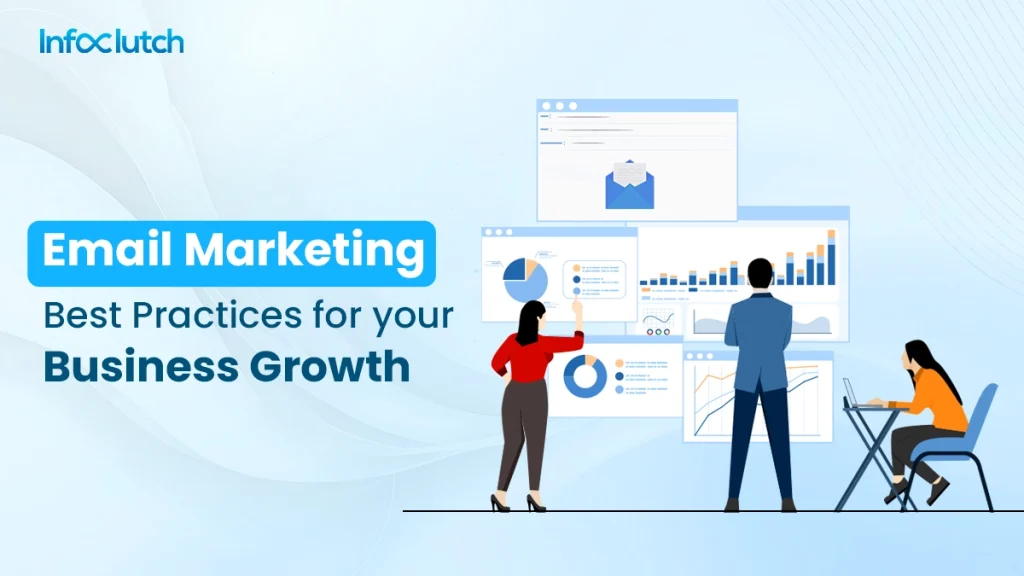Email marketing is one of the most effective strategies to acquire customers. 87% of brands said that email marketing contributes to their business’ success. At times, it is challenging to keep up with the best practices and tips.
Therefore, we have compiled all the steps and methods to ensure that you have the best email marketing practices in this blog. Without further ado, let’s quickly dive in on the benefits of email marketing practices.
Importance of Email Marketing Practices
Email marketing is a primary component of customer acquisition across all industries. It is a powerful tool as
- Email marketing is a cost-effective method to acquire a large customer base in comparison to other forms of digital marketing.
- It allows you to track what customers are responding and who all are not.
- Email marketing is a great tactic to increase brand awareness as it enables you to regularly connect with your targeted audience digitally.
- They allow you to stay in touch with customers and other website visitors regularly.
- Email marketing permits you to tailor your content according to the target audience. One such example is that you can send a customer an abandoned cart email that is specific to the item they are shopping for.
As you have grasped knowledge on the kind of impact email marketing practices do to your business, let’s head to some of the email marketing best practices that you can harness to connect and sell to your targeted customers.
Email Marketing Best Practices
Well, there a quite a few email marketing practices that you can use to level up your marketing and we have crafted the best practices for your clarity.
Email Personalizing
The first method of personalization is to add the first name of the recipient in the subject or the body of an email. The next method would be to segregate the lists of recipients. If you can analyse each of them, you can personalize content for that specific user behavior. You can also customize content through a reengagement email campaign for those who don’t frequently open their emails.
Personalization wins any day. Below, we have attached statistics that display the % of email tactics utilized in marketing practices, and personalization tops the chart with 36% effectiveness.
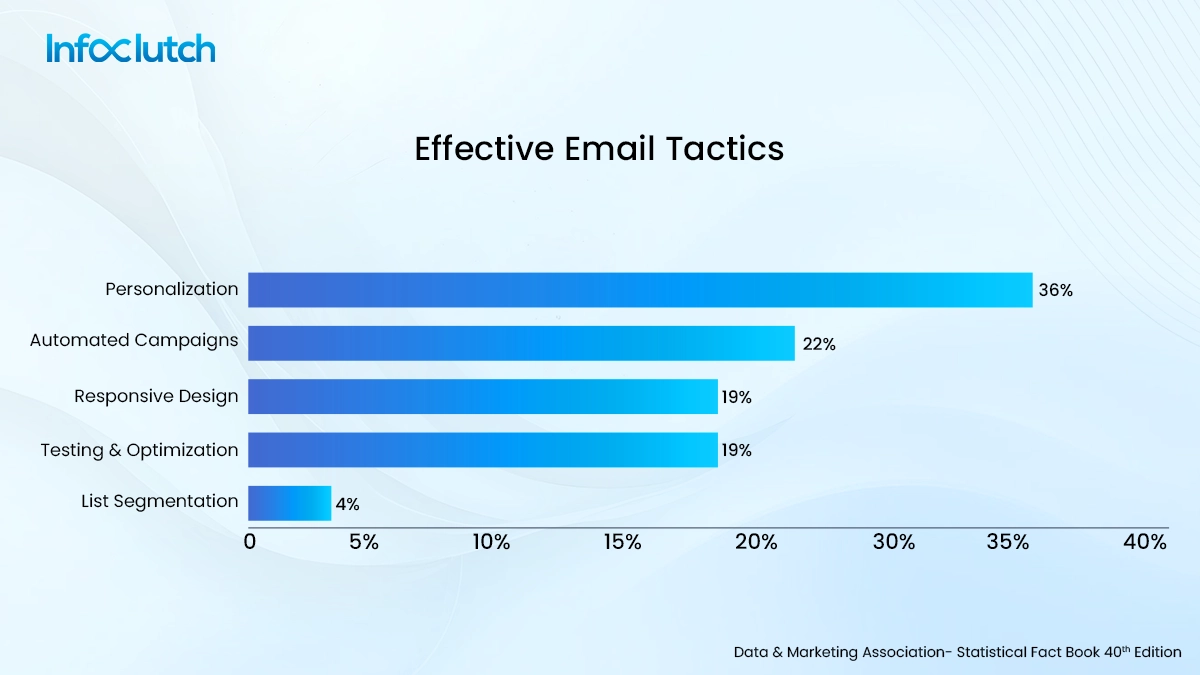
How to Write an Email
When the recipient opens your email, they should be welcomed with high-quality and enticing content from your brand. This can only occur if you have a well-designed email.
Here are some key steps to design an appealing email –
- You must start with an email design template that is flexible and enables you to create consistency.
- You must ensure that the email content is highly responsive.
- The content should be simple and easy to read.
- You must try to make it interactive and smooth.
It must contain a bold image or a large headline, your company logo, an ideal reason why you sent the mail and a clear CTA. With these instructions noted in your notepad, you can craft a persuasive and a compelling email copy for your email marketing purposes. Let’s dive into the details of writing a good subject lines, email body and a persuasive CTA.
How to write Attractive Subject lines
According to Zippia’s recent study, 69% of email recipients mark an email as spam only for the subject line. This occurs as the first impression of an email should leave an impact on the audience, and that determines whether the email is opened or sent straight to spam.
Let us jump at some of the pointers to keep in mind to craft attractive subject lines for email marketing
- Before you start writing any subject line, know your audience. This is the initial step to devise a line that would make them click on the email. Consider factors like who you are sending to and why you’re sending them.
- Being relevant is another major point to grab their attention. No one cares if you’re being mysterious or vague. People want answers and benefits that will help them.
- Focus on the email subject length. Ideally, it should not surpass 50 characters. The entire sentence should be visible in the eyes of the readers.
- Avoid using certain elements such as #, $, capital letters for all the words, different sized fonts, exclamation marks, to name a few.
- Use the right choice of words. According to a Global Benchmark Report, words like ‘exclusive’, ‘days’, ‘ends’, ‘save’, ‘extra’, and ‘last’ were the worst performing. Hence, use words that would not sell but rather tell a story to the customers.
How to write a compelling Email Body
Good writing isn’t about using any specific magic word, but it is more down the lines of providing the benefits simply and concisely. Here are a few notes to do and avoid while writing the body
- The content is to be devoid of jargon and be simplified as much as possible.
- You can use the PAS, 4 P’s formula to craft enticing email content.
- Concentrate on how you can solve the customer’s painpoint.
- Use bullet points to segregate the chunks of content for the customer’s convenience.
- Stop using friction words such as download, submit, order, etc. Friction words are those words that signify that the readers need to do something that they generally don’t want to do.
How to write an attractive CTA
Before you start crafting a CTA, you must step into the shoes of the recipients. Analyse if you would have gotten a certain CTA, would you have made any action? The only way you know that your CTA has stood out is when the recipient selects the button and makes an action.
Here are a few key points to consider while you are writing a CTA
- Understand what the cause is. If you’re unsure about your objectives, you wouldn’t be able to convey the same to your audience.
- Write in accordance to the cause. For example, if you want your audience to subscribe to a newsletter, you can use CTAs like “Subscribe Now” or “Join Us Today.”
- The CTA can also end with a question like, “Are you in for this Fanta-SaaS-tic ride?” Of course, it should align with your main proposal. Ensure that it is contextual within the industry.
Include an Email Signature
To make it look authentic and reliable, ensure that you keep an email signature towards the ending of the email. It renders a feel of realness and the recipient is more likely to respond to it.
When the email is being sent to the audience on behalf of your company, the email should include the information of the founder or the CEO.
The email signature should include a CTA, a link to your website, social media, and your designation.
For e.g.-
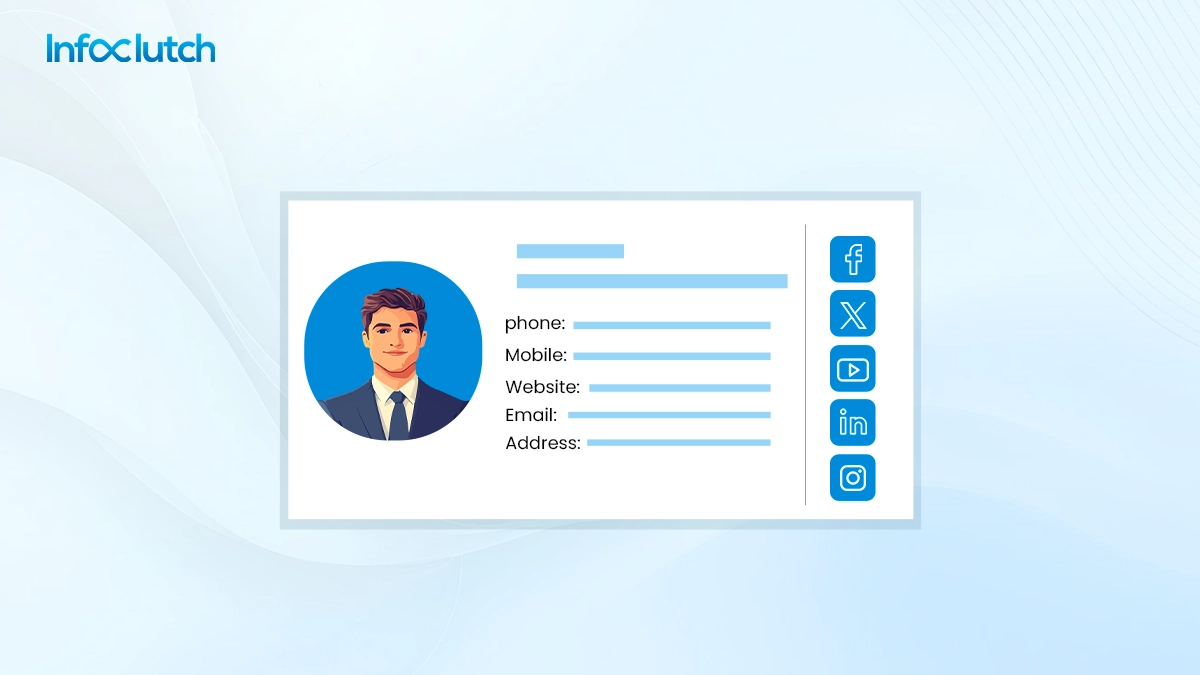
Include your Logo
You might think what’s in the name? It is everything! It plays a crucial part for people to stick to your email. Research says that.
A HubSpot study found that when businesses add a logo to their emails, the open rates increase by 21%. Additionally, consumer confidence in the authenticity of an email also increases by 90%. Considering this, you must not forget to add your logo in the email. The logo can be placed left of the email signature to give it a better visual look.
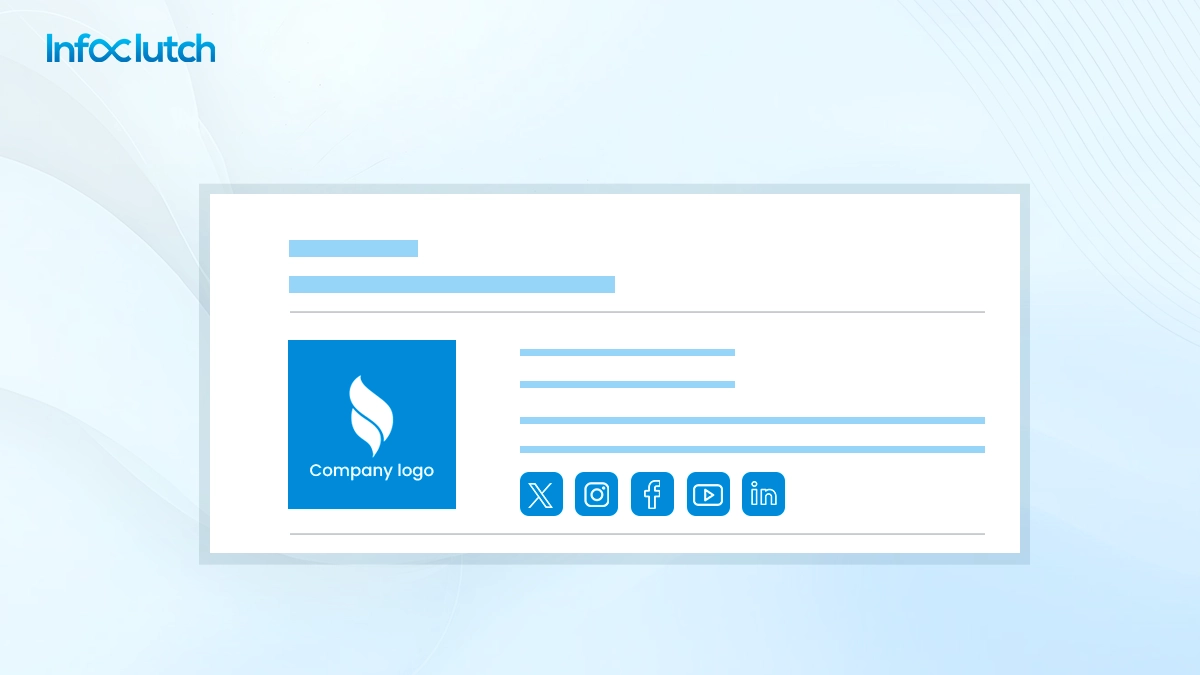
A/B your subject lines and other elements
If you cannot increase your email clickthrough rates, you must rectify a couple of things. It’s either you are not emailing the right people, or the content needs to be improved.
To begin with, conduct an A/B test. According to research by Litmus, businesses that A/B test every email see 37% higher ROI than those that never do.
It can be used to improve and optimize any digital marketing content.
We will take a hypothetical situation – You might change the color of CTA from blue to yellow to check if your email’s clickthrough rate increases. If it does, the test highlights that you must change all of your emails’ CTA from blue to yellow from now onwards.
Connect your Landing Page
Try to send your recipients to landing pages that are relevant to your objectives and email copy.
If you’re marketing a special landing page in your email, the landing page should align with the email’s headline, copy, and writing. It should create that consistency that goes a long way.
Also, you ensure that you’re using tracking tools to check which email and landing page work out more.
Avoid using No Reply
Refrain from using “no reply” or some other similar phrase. E.g., [email protected].
“No Reply” is an email message that deters recipients from responding and opting out of further emails.
Instead of that, keep an automated email with the first name [email protected]. Your customers are more likely to open emails if they know a human being wrote them. They must feel that human touch in your email copy.
Always Follow Up
You must adhere to this rule of following up. It would help if you did not sound too desperate too. You can try following up from two days to one week. That is an ideal time between sending your first email and a follow-up.
A study by QuickMail revealed that 55% of email replied comes from a follow up.
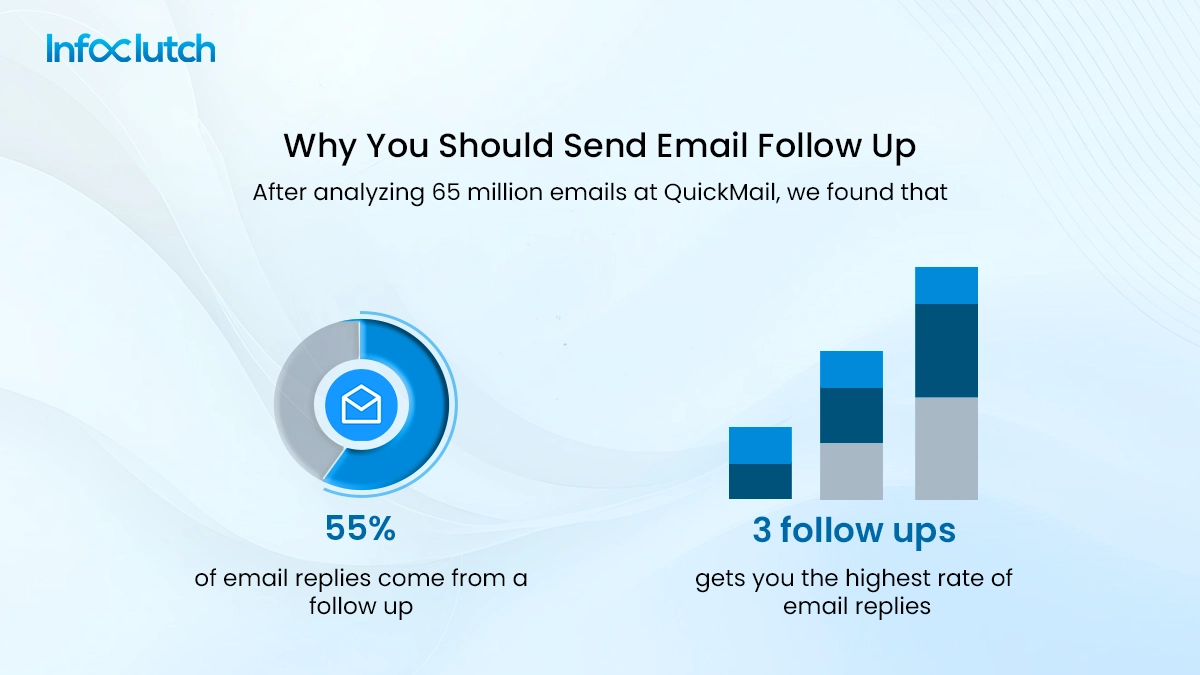
Following up is always fruitful and is necessary to get a response from a customer. There can be instances where the customer is busy, overlooked or forgot to respond to the email. This is where following up acts like a saviour.
Conclusion
To conclude, creating an effective email to reach out to your targeted customers requires meticulous planning, audience comprehension, and delivering pertinent and interactive content. By following these best practices, you can enhance the impact of email marketing and achieve your marketing goals.
